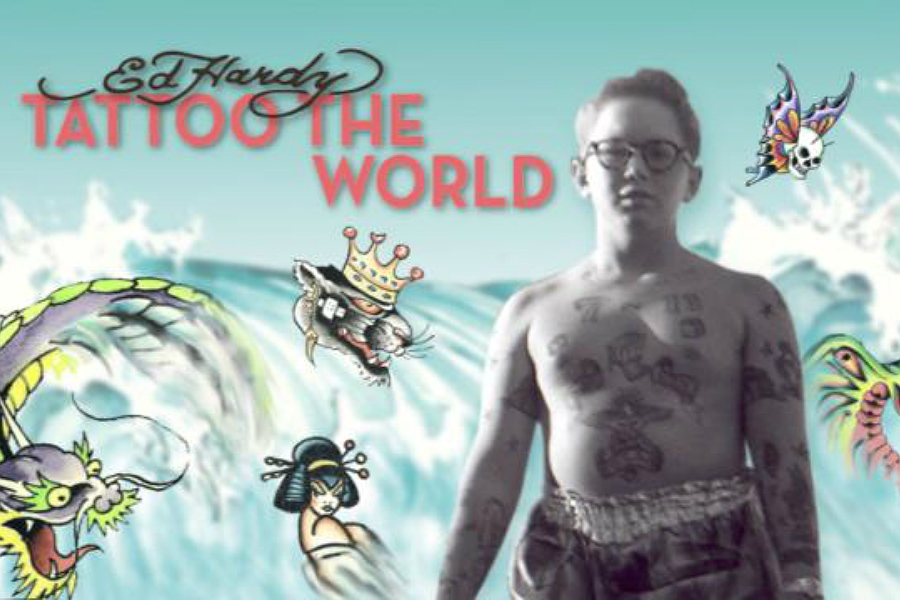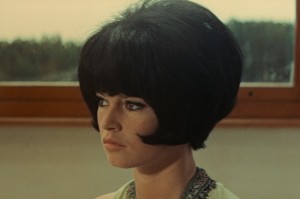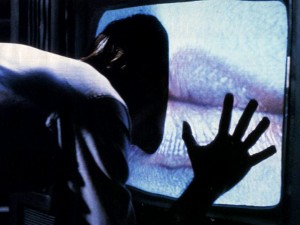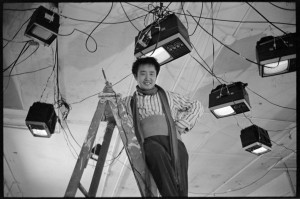Ed Hardy: Tattoo the World

Poetic creation or blemish its bearer lives to regret? DW Mault on Ed Hardy and the artistry of the tattooist…
Inquisitive fascination is the state that should be sought all day everyday, forever, and to the end of time. A Socratic state of mind is one which seeks to question the everyday and our surroundings; this in mind I approached this documentary about tattoo artist Ed Hardy. I have an ambivalent relationship to tattoos; my beloved grandfather had many strange and terrifying prison and Merchant Navy tattoos, that as child both repulsed and fascinated me in equal measure. Added to that I’m always alive to aesthetic possibilities (both of the real and corporeal), but having said all this, what Ed Hardy represented to me was both altered and destroyed after watching this film.
Michel Foucault said: “Perhaps transgression is like a flash of lightning in the night which, from the beginning of time, gives a dense and black intensity to the night it denies, which lights up the night from the inside, from top to bottom, yet owes to the dark the stark clarity of its manifestation, its harrowing and poised singularity.” Which just about sums up the dark beauty of the undercurrent of the art of tattooists (and they are artists not artisans) and the mean streets they walked before every bad soap actress WAG wannabe had a dolphin tattoo.
When we think about what it means to tattoo, what it means to live, one ponders that a tattoo is more than a painting on skin; because its inherent meaning cannot be comprehended without a knowledge of the history and mythology of the bearer. Which is true of all alternative communities, whether Yakuzas in Toyko, or the legendary prison tattoos of the Vorovskoy Mir (воровской мир). Thus they are a true poetic creation, and as a tattoo is written on human skin (the ultimate outsider answer to the confines of a society you have no interest in), so it tells us everything and nothing; and a uniqueness to the horror of the human condition.
Think of the very notion of submission in everyday life. Think of a visit to the dentist, lying there awaiting a knowing pain, that is borderline sexual; or the barbers/hairdressers, the touch between client and customer and of course a visit to a tattooist is layered with the routines of sexual practice. So from all this become what always happens, which is the commodification of the alternative; the picking and choosing of Outsiderdom, and the bastardisation of our lives… Which leads to Mr Ed Hardy, and the general perspective of him and his oeuvre.
Before watching this documentary, Ed Hardy had only negative connotations to me, I’m embarrassed to admit that I didn’t even know he was a tattoo artist; I presumed he was a fashion designer. A man who dressed people I would run a million miles from. (I once thought that his garish t-shirts were indicators of the possibility of STDs).
The documentary is directed by award winning filmmaker Emiko Omori (Rabbit In The Moon), who first met Hardy when she came for a tattoo. When she returned a year later (like Hardy said she would) she came armed with a camera…
Some documentaries achieve the high watermark of cinema, some are narrative (and nothing else), and some are formally banal but shine lights on subterranean sub cultures. Well EHTTW is very much the latter and better for that, and for knowing its limitations are part of its charm.
The first half of the film is the most interesting as it alternates between Hardy’s upbringing in Corona del Mar, California and the influences that touched his young consciousness; whether that was Mexican and Indian immigrants or creating his own tattoos for his friends from the age of 10 onward. From here we learn of an alternative poly-culture of LA and its surroundings, and the most interesting historical perspective of modern America: the post WWII baby boom and the underlying darkness that encroaches and eventually overtakes this never-was Edenic cathedral of consumerism/capitalism.
From here you expect to hear of a Horatio Alger story of the moral downfall and spiritual rise, and a prime example of US manifest destiny can-do bullshit… But no, he quickly forgets about tattoos and throws himself into painting and art school, after discovering Goya and the Black Paintings. He attends Yale Art School and wins various prizes and then rediscovers tattoos and the old genius’ like Sailor Jerry Collins and his ilk. He turns his back on Yale and discovers what all true artists know: that through obsession is identity and self fulfillment.
The second half is less interesting, and doesn’t really touch on the booming Empire he has created that seems to have his name and tattoos on anything. It’s a short film (73 minutes) but it slowly fizzles out when it could have shown us other portrayals of the sub-culture of tattoos. The filmmaker only touches on his journey to Japan to apprentice with the Japanese master Horihide, for example.
I was pushed to seek out various other artistic representations of tattoo culture and what came to mind was the (Vogue photographer) John Deakin exhibition that debuted at the first Liverpool Biennial in 1999. These were Deakin’s private obsession: photographs of tattooed men from the 50s and before. Alas, it seems the filmmaker and Hardy himself gets a little bored or dull (maybe), and it all becomes a backslapping exercise, but anyone who mentions Kuniyoshi can’t be all bad, right?
Ed Hardy Tattoo The World is available to buy on DVD from Axiom Films





